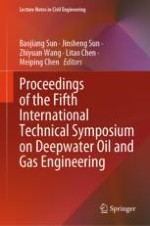2024 | OriginalPaper | Buchkapitel
Process Design of Hydrate-Membrane Coupled Separation for CO2 Capture from Flue Gas: Energy Efficiency Analysis and Optimization
verfasst von : Zhengxiang Xu, Xuemei Lang, Shuanshi Fan, Gang Li, Yanhong Wang
Erschienen in: Proceedings of the Fifth International Technical Symposium on Deepwater Oil and Gas Engineering
Verlag: Springer Nature Singapore
Aktivieren Sie unsere intelligente Suche, um passende Fachinhalte oder Patente zu finden.
Wählen Sie Textabschnitte aus um mit Künstlicher Intelligenz passenden Patente zu finden. powered by
Markieren Sie Textabschnitte, um KI-gestützt weitere passende Inhalte zu finden. powered by
